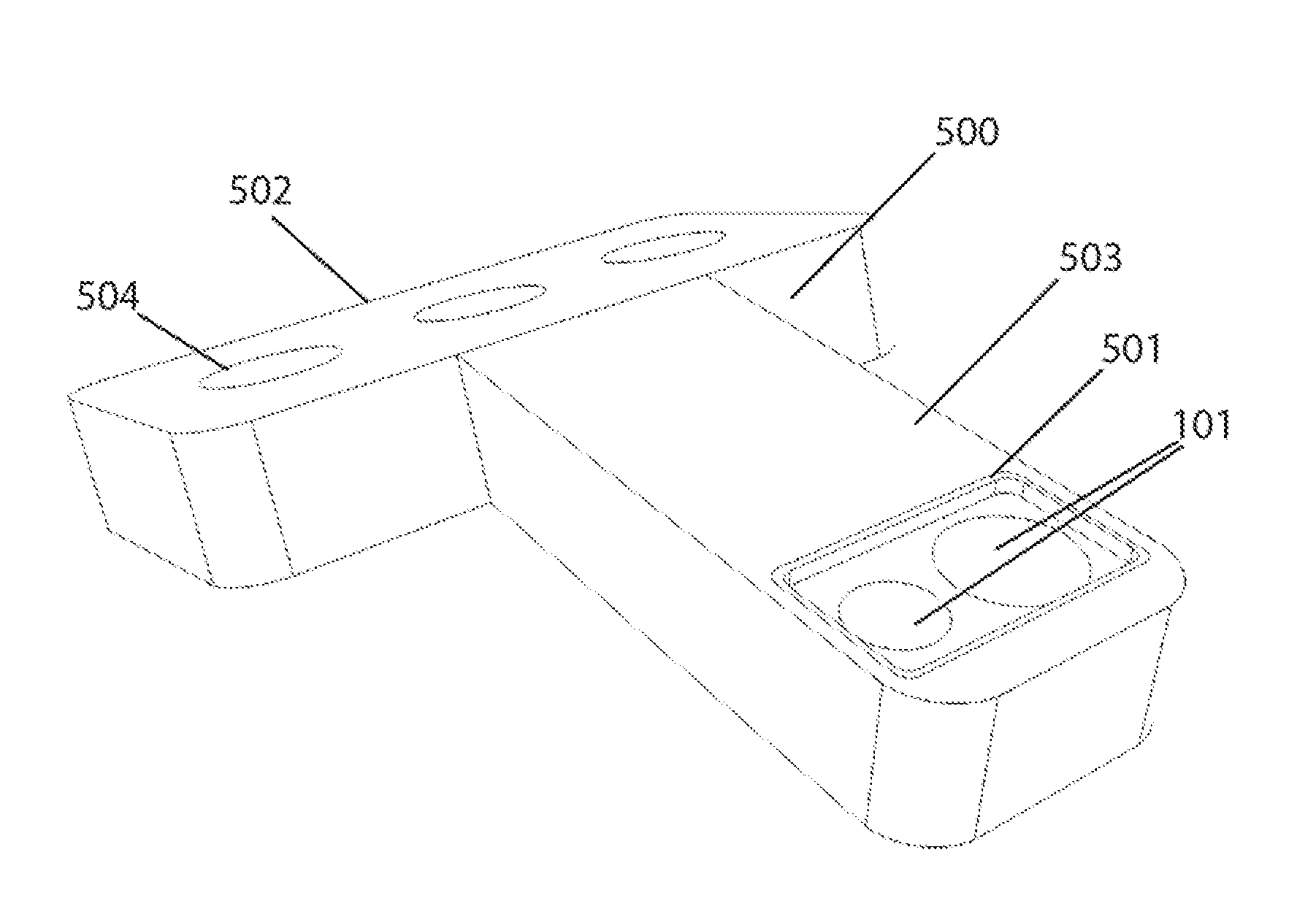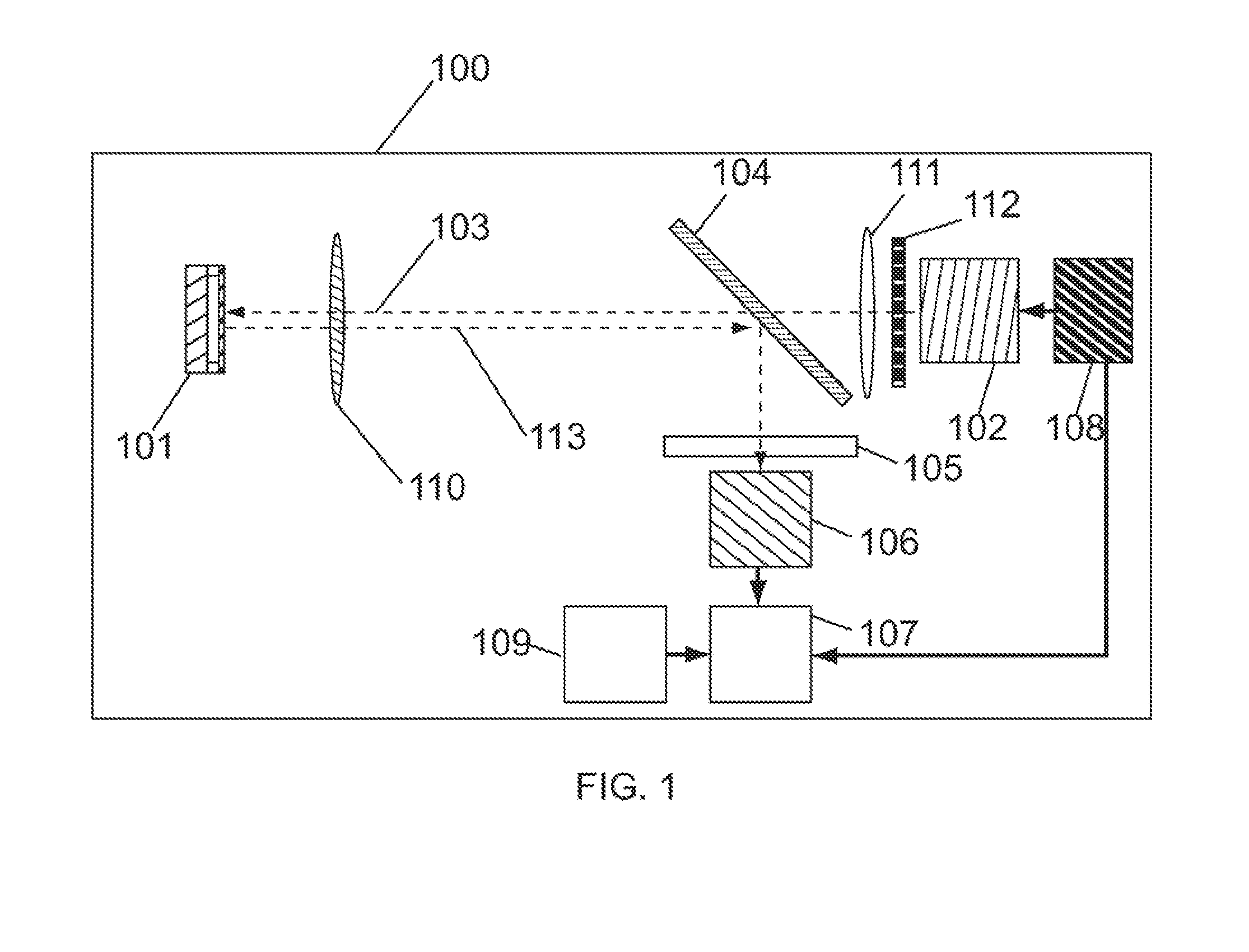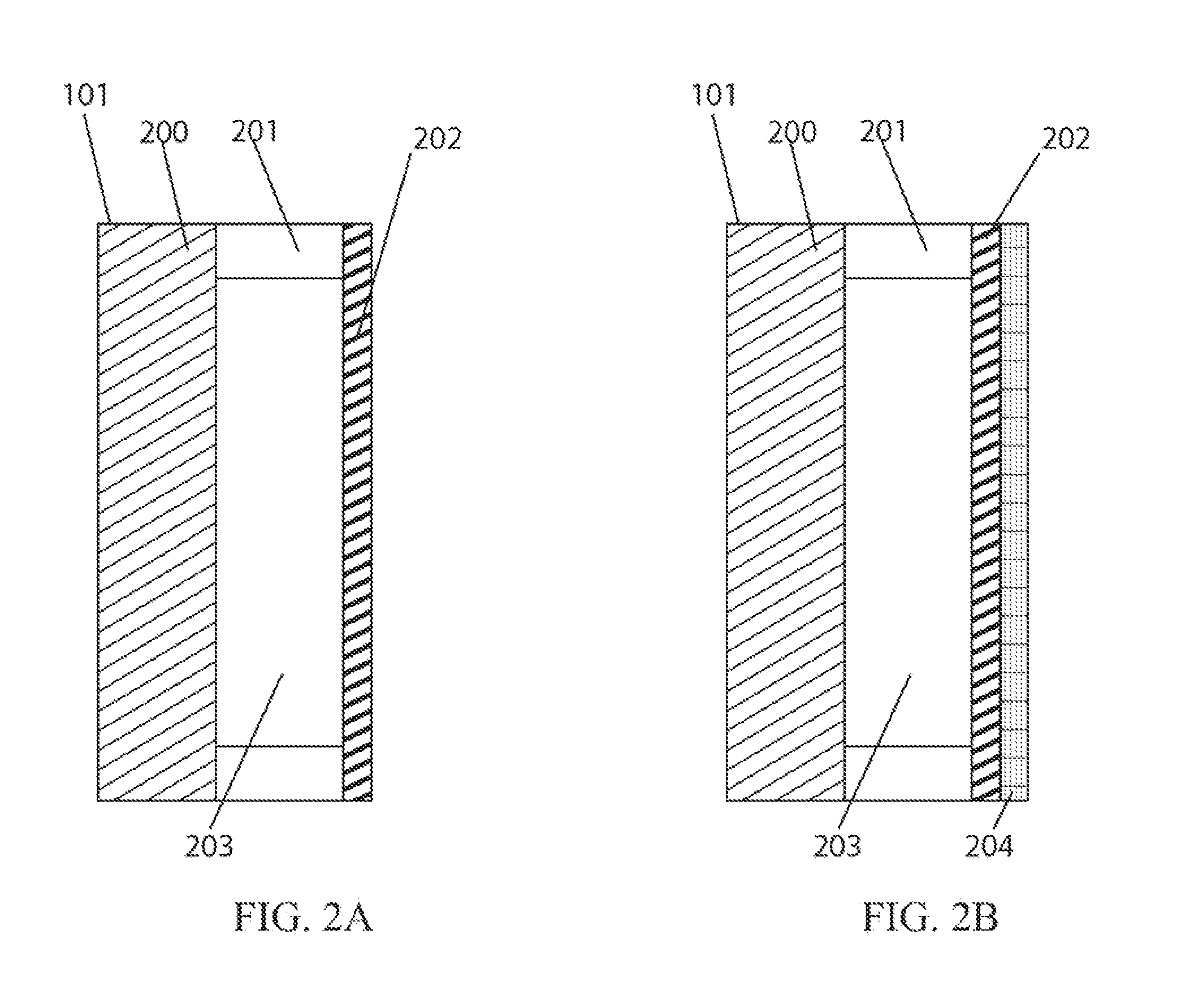System, device, and method for determination of intraocular pressure
a technology of intraocular pressure and system, applied in the field of systems, devices, and methods for measuring intraocular pressure, can solve the problems of insufficient single-point measurements labor-intensive longer-term tonometry, and inability to fully manage eye diseas
- Summary
- Abstract
- Description
- Claims
- Application Information
AI Technical Summary
Benefits of technology
Problems solved by technology
Method used
Image
Examples
Embodiment Construction
FIG. 1 shows an exemplary system 100 for frequent measurement of intraocular pressure using an intraocular (i.e., inside or within an eye) pressure sensor 101 which, in use, would be implanted in an eye. The pressure is measured optically by the system 100 using a light source 102 to illuminate the intraocular pressure sensor 101 with one or more wavelengths of incident light 103. A resultant light 113 (comprising reflected light or a combination of reflected and emitted light) is captured by a detector 106 and the signal from the detector 106 is processed by a processing device 107 to determine the intraocular pressure.
The exemplary system 100 further comprises an objective lens 110, a beam splitter 104, an illuminating lens 111, and a diffuser 112. The objective lens 110 performs at least one of the functions of collecting light from the intraocular pressure sensor 101 and forming an image of the intraocular pressure sensor 101 on the detector 106. The beam splitter 104 allows lig...
PUM
 Login to View More
Login to View More Abstract
Description
Claims
Application Information
 Login to View More
Login to View More - R&D
- Intellectual Property
- Life Sciences
- Materials
- Tech Scout
- Unparalleled Data Quality
- Higher Quality Content
- 60% Fewer Hallucinations
Browse by: Latest US Patents, China's latest patents, Technical Efficacy Thesaurus, Application Domain, Technology Topic, Popular Technical Reports.
© 2025 PatSnap. All rights reserved.Legal|Privacy policy|Modern Slavery Act Transparency Statement|Sitemap|About US| Contact US: help@patsnap.com



